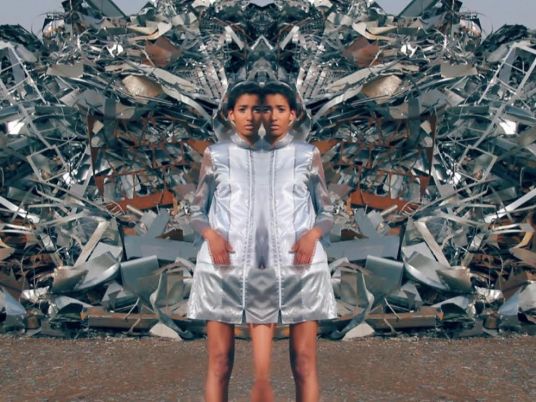"As I finished my seven-hour shift at the factory, I started to plan my evening. Should I go see a movie or maybe a play at the Young Workers’ Theatre, or visit an exhibition of the great Egyptian painter Ragheb Ayad, or perhaps go to a concert or a poetry evening?"
Not the start of a story, but a glimpse into the life led by Egyptian artist Fathi Afifi in Cairo in the late sixties through to the eighties. "The Egyptian cultural scene at that time was rich, open and inclusive, encouraging local talent and engaging the public," explains Afifi. Growing up in this period, Afifi was inspired by Egyptian and international cinema, the cosmopolitan nature of the city, youth and proletarian movements and the pop art movement, all of which brought him to create an artistic niche reflecting the situation at that time.
After completing his secondary school diploma, Afifi joined the independent studies program at the School of Fine Arts while working at a local factory. Taught by renowned Egyptian artists and studying alongside an Al Azhar sheikh and a military sergeant, Afifi mastered different art techniques, including black and white etching for which he received the jury award at the 27th Cairo International Biennale in 1998.
Afifi owes much of his unique style and high sensibility to the non-structured educational approach of the School of Fine Arts. Afifi’s artwork is mostly based on mental images he draws from around the city, and involves some level of satire. His latest work is currently exhibited at Espace Karim Francis. The exhibition is a critical reflection on foregone times vis-à-vis current social, economic and cultural conditions.
At first glance, the exhibition seems fragmented, combining scenes from old Egyptian and foreign movies showing people at metro stations, on the street, in parks and in factories. Upon closer examination, the exhibition walks us through the daily life of Afifi’s youth. Back in the seventies everyone went to the movies, as shown in a painting of an entrance to a movie theatre with people lining up to watch Tarzan, a blockbuster movie at that time. Cinema then was a leading media to disseminate culture, enriching lives with its high aesthetics and splendid musical shows. Hence Afifi devotes part of his exhibition to glorify cinematic icons, from Laila Mourad and Naima Akef to Marilyn Monroe. Grey color schemes are used to resonate with our memories of the movies and emphasize the finesse of cinematic production in the past. Selected elements within the paintings are then colored in bright reds, yellows, oranges and blues: “Old movies were highly aesthetic so I could visualize the colors on the screen while watching,” explains Afifi.
Afifi dedicates the next section of the show to portray street life in the city, going back and forth in time to highlight daily rituals, some of which have perished and some of which have been sustained throughout the years. He depicts for example people riding the metro to tour the city on the weekend, stopping at public gardens for a picnic. Paintings of the metro stations and carriages are vibrant with people and colored in a blue palette, which is dominant in Afifi’s artwork. Amongst the street section is a sepia painting with strong ideological references, portraying a woman helping her child to take her first steps on the street. We see the woman from the inside of an old building, through an open metal gate. The metal gate is decorated with old floral patterns that symbolize the socio-cultural baggage pulling down Egyptian society. With the current rise of conservatism, the piece is a call for openness and in-depth reflection on the status quo.
Finally, Afifi presents images of state factories to illustrate the industrialization era of Nasser and provide insight into the lives of an often overlooked working class. Afifi is cynical about current privatization schemes and structural adjustment programs. Such cynicism he conveys subtly, for example by inserting a real water bottle label of Baraka into a painting of two blue collar workers on their lunch break. ‘Baraka’ can have several interpretations. It means ‘blessing’ in classical Arabic. However, it is often used to suggest a lack of planning when used in colloquial Arabic. Afifi thus uses the label to criticize the state’s lack of long term vision nowadays. Another piece refers to the increased power of the police. It shows people going home after work with giant policemen scattered in the background. The exhibition as a whole offers an interesting take on developments taking place in Egypt over the past few decades, and a visit is strongly recommended.
The exhibition is on display from 25 October to 30 December 2009
Espace Karim Francis: 1 El Sherifein Street, Downtown, Cairo
202 2391 63 57/016 849 25 09




